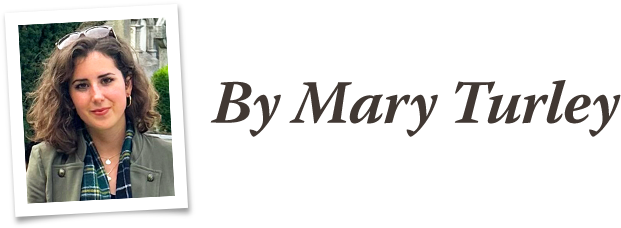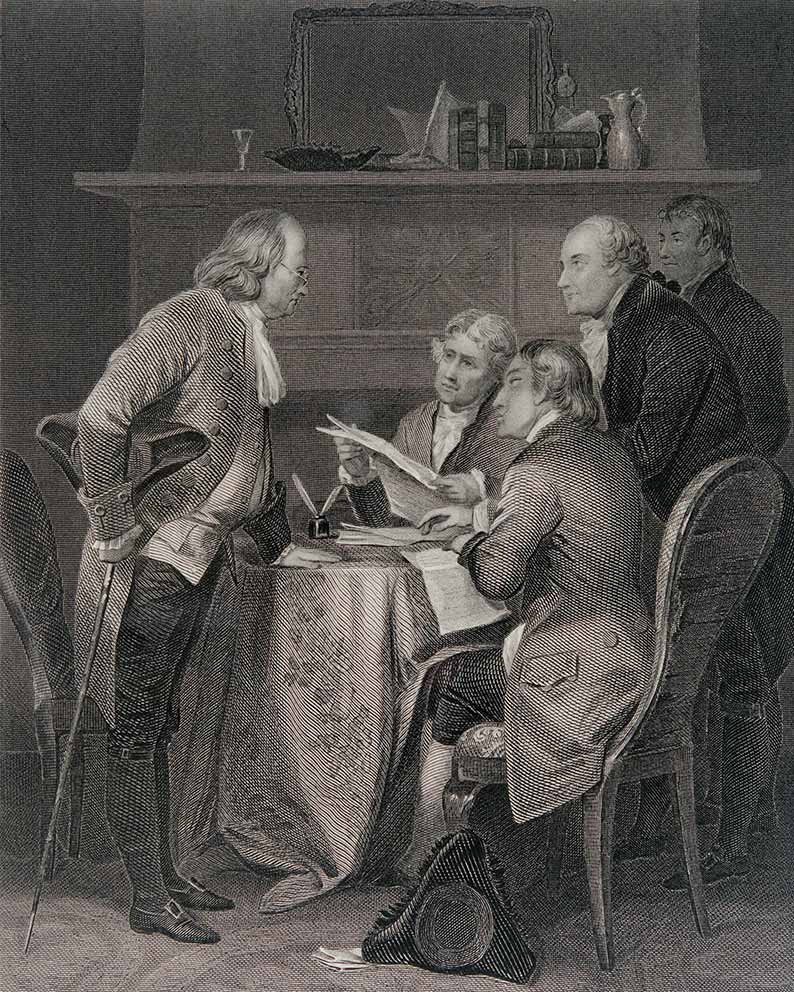
Congress Approves the Resolution for Independence, June 7, 1776
 mongst the largely futile clamor that marked the early half of the Second Continental Congress, there rose to his feet the leading delegate of powerful old Virginia, and he declared with chilling clarity his motion to resolve “that these United Colonies are, and of right ought to be, free and independent States.”
mongst the largely futile clamor that marked the early half of the Second Continental Congress, there rose to his feet the leading delegate of powerful old Virginia, and he declared with chilling clarity his motion to resolve “that these United Colonies are, and of right ought to be, free and independent States.”

Independence Hall, Philadelphia, PA where the Second Continental Congress convened
The reaction was hardly that of unanimous agreement or even spirited dissent—delegates sent by their respective colonies to exert new ways to pacify England were utterly alarmed and dubious that their Virginian colleague even had the backing of his state to propose such an inflammatory motion. Richard Henry Lee, the “Cicero of Virginia” as he was called on account of his oratory, assured them he had. His state’s House of Burgesses were agreed: peace with such tyranny was no longer fitting for a free people—there must be separation, whatever the cost.

Richard Henry Lee (1732-1794)

Interior of Independence Hall, where the Second Continental Congress convened
His resolution was approved by Congress on June 7, 1776, making it the first official act of the United Colonies that set them irrevocably on the road to independence. Almost a month’s worth of debate, persuasion and the seeking of each colonies’ approval drew the process on interminably, as violence continued in the northern colonies and General Washington’s poorly-equipped militia suffered loss after loss. But there were many amongst the delegates who were not taken by surprise: they had yearned and prayed for this day from before the start of the first Congress.

Patrick Henry’s famous speech was met with passionate response, both for and against his ideas
Knowing the proposition must come from a Virginian to be persuasive to the rest of the Congress, Massachusetts firebrand John Adams happily stepped aside for Lee to lead the charge. It did not prevent Adams, however, from almost immediately following Lee’s divisive resolves with a few of his own: one being the setting up of a delightfully hopeful committee to draft a Declaration of Independence—in the off-chance this extremely polarizing resolution were to actually pass. Adams famously persuaded Thomas Jefferson to pen the document and the rest now comprises one of the most pivotal moments of our national story.

The Second Continental Congress charged the Committee of Five—comprised of John Adams, Benjamin Franklin, Thomas Jefferson, Robert R. Livingston, and Roger Sherman—with authoring the Declaration
In the popular overview of our revolution that we often learn, there is acknowledgment of the monumental opposition that had to be surmounted. Yet nothing short of a thorough dive into the particulars—a dive that only leads to ever more astonishing findings that go on and on endlessly—gives even a glimpse of how long and anticipated was our nation’s birth..

“Declaration House” or the Graff House at 700 Market Street, Philadelphia, is the boarding house in which Thomas Jefferson wrote the Declaration of Independence

The portable writing desk on which Jefferson drafted the Declaration of Independence
It was miracle enough that on July 4 the Declaration of Independence was ratified and proclaimed to the public. Behind that date were years of visionary patriots longing for independence, but caught amongst a people not fully ready to embrace the inevitable.
It is a beyond hopeful study to read of their frustrations, but also of their patient purposefulness. Just as an example:
As far back as 1768, Richard Henry Lee proposed and created the Committee of Correspondence for the purpose of linking the leaders of the thirteen colonies together. This committee later became a crucial communication route for “treasonous” plans—plans that included his proposal that there be a Continental Congress in the first place.

The Liberty Tree in Boston, under which the Committee of Correspondence frequently met
John Adams was famously a lawyer in Boston who used his practice to defend British soldiers in the wake of the Boston Massacre. His victory that day—proving that English Common Law still ruled America with justice and impartiality—got thrown back in his face shortly after during the British occupation of his city. Fully convinced that England was no longer ready or willing to govern justly, he appealed desperately to both congresses while his family was suffering under the thumb of British occupation. His efforts seemed futile in the face of others’ indolence, but in the end his tenacity was greatly rewarded.

An unfinished painting of the Signing of the Declaration of Independence,
by Charles Édouard Armand-Dumaresq, c. 1873
Patrick Henry, fierce persuader in the first Continental Congress, swayed the pivotal vote for ratifying independence in Virginia’s House of Burgesses, and later served as wartime Governor of the state. Henry had such foresight that he was warning his countrymen a year before the vote thusly:
“They tell us, sirs, that we are weak; unable to cope with so formidable an adversary. But when shall we be stronger? Will it be the next week, or the next year? Will it be when we are totally disarmed, and when a British guard shall be stationed in every house? Shall we gather strength by irresolution and inaction? Shall we acquire the means of effectual resistance by lying supinely on our backs and hugging the delusive phantom of hope, until our enemies shall have bound us hand and foot? Sir, we are not weak if we make a proper use of those means which the God of nature hath placed in our power. The millions of people, armed in the holy cause of liberty, and in such a country as that which we possess, are invincible by any force which our enemy can send against us. Besides, sir, we shall not fight our battles alone. There is a just God who presides over the destinies of nations, and Who will raise up friends to fight our battles for us. The battle, sir, is not to the strong alone; it is to the vigilant, the active, the brave. Besides, sir, we have no election. If we were base enough to desire it, it is now too late to retire from the contest. There is no retreat but in submission and slavery! Our chains are forged! Their clanking may be heard on the plains of Boston! The war is inevitable—and let it come! I repeat it, sir, let it come!

The famous painting of Patrick Henry’s impassioned and persuasive speech
It is in vain, sir, to extenuate the matter. Gentlemen may cry, Peace, Peace—but there is no peace. The war is actually begun! The next gale that sweeps from the north will bring to our ears the clash of resounding arms! Our brethren are already in the field! Why stand we here idle? What is it that gentlemen wish? What would they have? Is life so dear, or peace so sweet, as to be purchased at the price of chains and slavery? Forbid it, Almighty God! I know not what course others may take; but as for me, give me liberty or give me death!”

A depiction of the Second Continental Congress voting on the United States Declaration of Independence
Image Credits: 1 Independence Hall (wikipedia.org) 2 Richard Henry Lee (wikipedia.org) 3 Independence Hall, interior (wikipedia.org) 4 Patrick Henry’s speech (wikipedia.org) 5 The Committee of Five (wikipedia.org) 6 Graff House (wikipedia.org) 7 Jefferson’s Desk (wikipedia.org) 8 Liberty Tree (wikipedia.org) 9 Signing the Declaration (wikipedia.org) 10 Patrick Henry (wikipedia.org) 11 Congress voting for independence (wikipedia.org)






